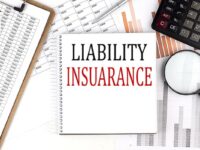There are nine simple steps that you can take to maximise your return on your IP investment.
Nine steps to minimise intellectual property costs
Quality intellectual property (IP) services can be a daunting investment. This is particularly so in the case of fledgling businesses, which unluckily are often the ones most in need of good advice, yet are also the ones with the least capacity to invest in it.
Fortunately there are simple steps that you can take to maximise your return on your IP investment.
Step 1 – Get good advice
It’s important to start from a position of knowledge. Don’t operate on assumptions about IP because you’re worried what good advice will cost. Like all things, ‘a stitch in time saves nine’.
This is not a suggestion to immediately incur costs. Any good advisor will be happy to have a brief free-of-charge discussion about the issues and what it will cost to advance the situation. You will then be in a better position to make an informed decision.
Nor is it a suggestion to avoid all costs – ‘If you think it’s expensive to hire a professional to do the job, wait until you hire an amateur,’ says Paul Neal ‘Red’ Adair.
Step 2 – Analyse cost-benefits before getting started
At the outset, seriously consider whether patent, design or trademark protection is warranted and only invest if there is a clear business case to do so.
Step 3 – Look before you leap
Pre-filing patent searches aim to locate earlier publications that might stop you getting patent protection. A search is entirely optional, but is often advisable because it can save you the significant costs of pursuing patent applications that are doomed to fail.
Trademark searches are more typically aimed at checking whether you can actually use the trademark (avoiding expensive stock recalls and rebranding). Once this is known, an opinion on the difficulty of registering the trademark is usually straightforward.
Step 4 – Brief your attorney well
Patent and trademark attorneys charge for their time. Anything that you can do to make more efficient use of their time will save you money. Provide crisp, clear and complete instructions to your attorney so they know what you are talking about without having to spend time working it out or coming back to you for missing information.
Step 5 – Choose low-cost trademarks
Choosing a trademark that in no way resembles any competitor’s trademark and which other traders would not want to use ‘in good faith’ will reduce the likely costs of pursuing trademark protection. Choosing an entirely made-up word is a good strategy to minimise costs – for example, Kodak and Xerox, now famous international brands, started out as made-up words.
Choosing an entirely made-up word is a good strategy to minimise costs – Kodak and Xerox started out as made-up words.
Step 6 – Be realistic about the countries of interest
A common mistake is to start out with patent, design or trademark protection in a large number of countries, then not have the funds to follow through. When the funds run out, the patent, design and trademark applications lapse, leaving no rights outstanding, and the money spent has been lost. On the other hand, by being more selective at the start, the same money may well have secured valuable rights in a smaller number of countries.
Step 7 – Actively manage your portfolio
Keep an eye on your patent, design and trademark rights and ruthlessly cull any that are no longer valuable. Has a change in the market rendered your patented technology obsolete? Have you rebranded?
Step 8 – Provide complete and timely instructions
If patent and trademark attorneys have to chase you for instructions, they will charge for this time.
Step 9 – Trust your attorney (or find a new one)
If you disagree with your attorney, raise it with them but don’t let it turn into a long-winded debate. If you really feel they have got it wrong, then it’s time for a new attorney or at least a second opinion.
More on patent, design and trademark costs, and how to minimise them.
Ben Mott, Principal, Mechanical Engineer and Patent Attorney, WADESON













